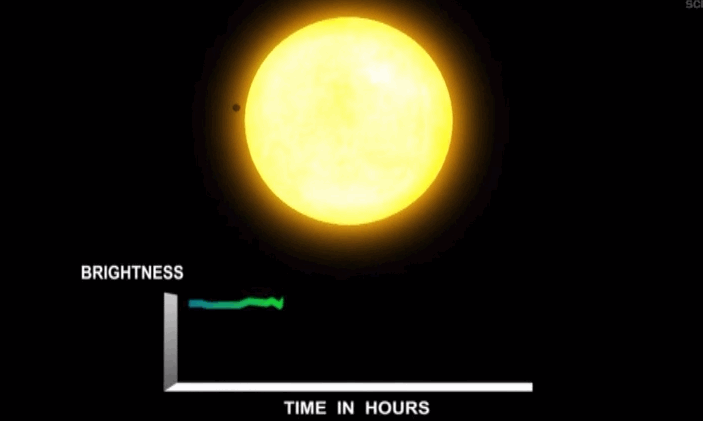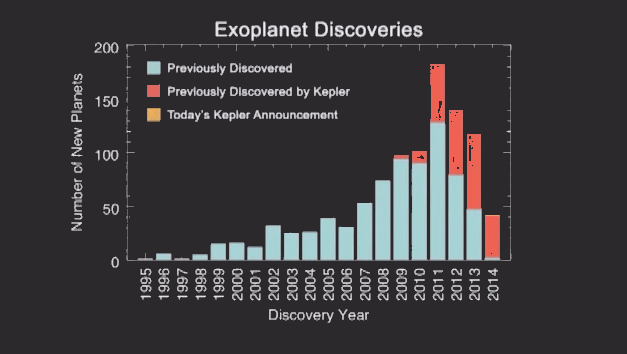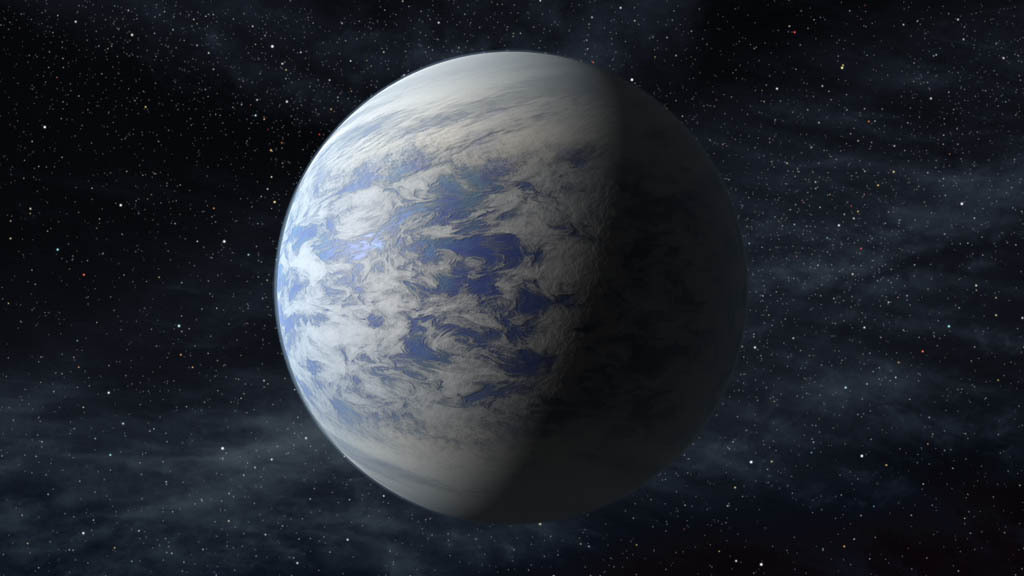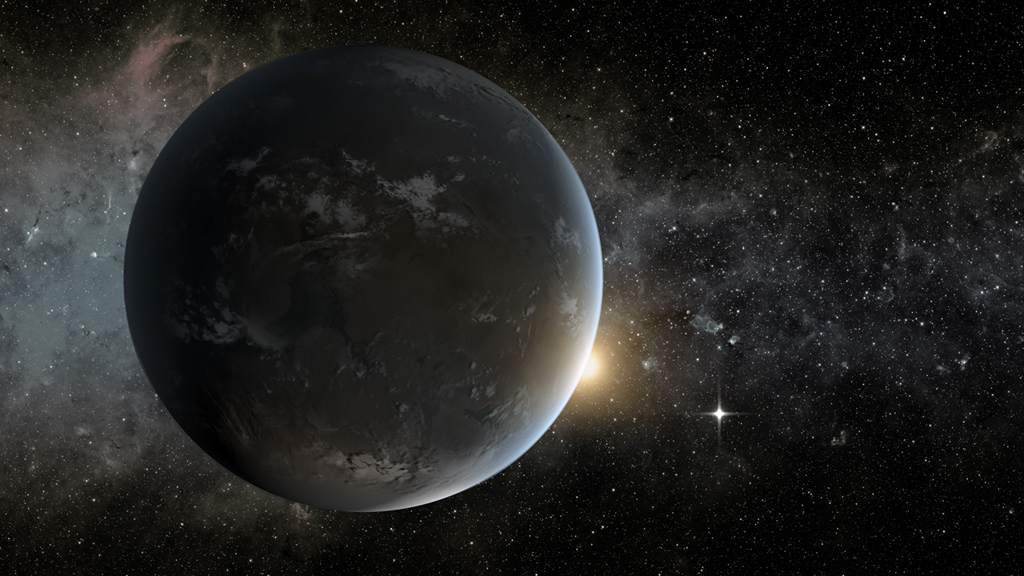NASA: 715 new planets found, 4 of them may be suitable for life
February 27, NASA reported the discovery of 715 new planets that were recently found in our region of the Milky Way, which almost doubles the number of exoplanets known to us. The planets were discovered using the Kepler space telescope and a new technology.

There is a lot of traffic under the cut.
Since the launch of Kepler in 2009 to 2011, scientists have discovered 3,600 potential planets. They saw objects by detecting small moving dark dots against the bright background of nearby stars:

')
A sufficiently effective method of detection, but still leaving a question to scientists is really planets or another unknown phenomenon in space ...? To solve this problem, scientists have used a technology called "verification of multiplicity", which is based on probability. Here is how NASA explains this:
“Kepler explores 150'000 stars, and found among them several thousand of those in whose systems there are potential planets. If all observed stars were investigated, only a small number of them would have more than one potential planet. Kepler explored hundreds of stars with many potential planets. ”
Everything is quite simple, where there is a greater cluster of objects, there is a higher probability of finding a planet. Thus, 715 planets were found and confirmed. 95% of them are smaller than Neptune. Below you can see how the number of discovered planets increased dramatically after scientists began using the new method:

During the study, scientists found four planets in the so-called "habitable zone" - a certain range of distance from the star, where the surface temperature of the planet may be suitable for the existence of water. At present, scientists are trying to determine whether the planets are gaseous (for example, Saturn) or belong to those having the water world (like Earth).
Based on the data on the size and distance from their stars, scientists believe that these 4 planets look like this:
Kepler-69c is 70% larger than Earth. It bends around the orbit around its star in 242 days.

Kepler-62e is 60% larger than Earth. It bends around the orbit around its star for 122 days.

Kepler-62f is 40% larger than Earth. It rotates in orbit around a star that is located at a distance of 1'200 light years from Earth.

Kepler-296f rotates in orbit around the star, which is half the size and has a brightness of only 5% compared to our sun.

More information about the Kepler telescope and the new method in the following video (in English):
UPD:
Photo space (compilation of NASA photos that were published as part of the Cosmos: A Spacetime Odyssey TV show on March 9, do not consider it an advertisement, a rather long tape of photos and about 10mb, so we decided not to post it here)
Source: https://habr.com/ru/post/215901/
All Articles